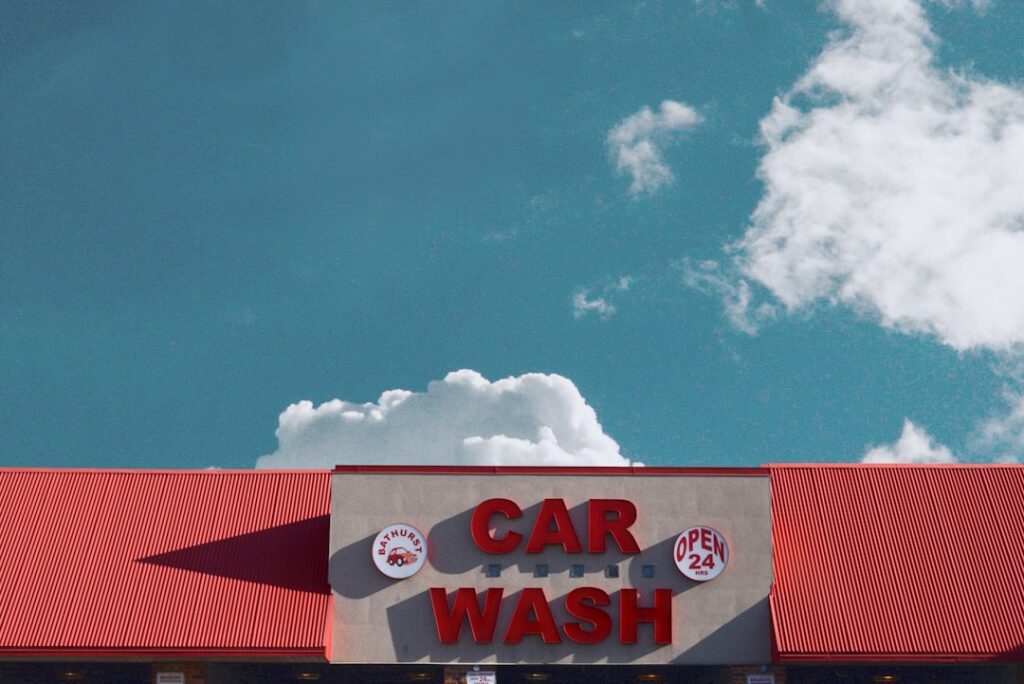Washing a car on a bright summer day seems like a perfect weekend activity. However, the combination of intense solar radiation and high ambient temperatures creates a scientifically hostile environment for your vehicle’s paint. A flawed process doesn’t just result in a subpar clean; it can actively inflict damage. The primary antagonists are rapid water evaporation, which leaves behind mineral deposits (water spots), and improper washing techniques, which create a web of micro-scratches known as “swirl marks.”
This guide provides a systematic, data-driven methodology for achieving a professional-grade wash, even when facing the challenges of summer heat. By understanding the principles at play, you can protect your automotive investment and achieve a truly flawless finish.
Phase 1: Environmental & Equipment Analysis
Before a single drop of water touches your car, a strategic assessment is critical. The goal is to control the variables that lead to paint damage.
1. Mitigate Thermal Impact:
Direct sunlight can heat a car’s surface panels to over 140°F (60°C). At these temperatures, water and car shampoo evaporate almost instantly. This leaves behind soap scum and, more damagingly, mineral deposits like calcium and magnesium present in tap water. These deposits can etch into your car’s clear coat, creating permanent spots.
- Optimal Strategy: Wash your vehicle in a shaded area. If no shade is available, perform the wash during the cooler hours of the day, such as early morning or late evening, when panel temperatures are significantly lower.
2. Assemble the Correct Tools:
Your choice of equipment is the single most important factor in preventing swirl marks. These fine scratches are caused by dragging abrasive particles (dirt, grit) across the paint surface.
- The Two-Bucket Method: This is a non-negotiable for proper washing. Data shows it is the most effective way to reduce wash-induced scratches.
- Bucket 1 (Wash): Contains your car shampoo and water solution.
- Bucket 2 (Rinse): Contains only clean water.
- The Process: After washing a single panel, you rinse the dirty wash mitt in the rinse bucket before returning it to the soapy wash bucket. This isolates the grit and prevents it from being reintroduced to the cleaning process. For optimal results, place a Grit Guard at the bottom of each bucket to trap debris.
- pH-Neutral Car Shampoo: Household detergents like dish soap are formulated to strip grease and oil aggressively. Their high-alkaline pH will strip your car’s protective wax or sealant, leaving the clear coat exposed to UV radiation and contaminants. A pH-neutral car shampoo is formulated with surfactants that lift dirt without degrading these protective layers.
- Microfiber, Not Cotton: A microfiber wash mitt and drying towels are essential. The fibers are extremely fine—about 1/100th the diameter of a human hair—and are split to create a vast surface area. This structure allows them to lift and trap dirt particles within the towel, rather than pushing them across the paint like the larger, less absorbent loops of a cotton towel.
Phase 2: The Systematic Wash Protocol
With the environment controlled and equipment ready, execute the wash with methodical precision. Work from the top down, allowing gravity to assist in removing dirt.
Step 1: The Pre-Rinse
Before touching the paint, use a hose or pressure washer (on a wide-fan, low-pressure setting) to remove all loose dirt, dust, and debris. This step removes up to 70% of the larger abrasive particles, minimizing the risk of scratching during the contact wash.
Step 2: Wheels & Tires First
Wheels accumulate the highest concentration of ferrous brake dust and road grime. Wash them first using a dedicated wheel cleaner and separate brushes. This prevents cross-contamination and ensures you don’t splash brake dust onto freshly cleaned panels.
Step 3: The Top-Down Contact Wash
Begin the two-bucket wash, starting with the roof.
- Dunk your clean microfiber mitt into the soap bucket.
- Gently wash a single panel (e.g., the roof, then the hood) in straight, overlapping lines. Avoid aggressive circular motions, which create highly visible, concentric swirl marks. Straight-line micro-scratches are far less perceptible.
- After one panel, submerge the dirty mitt into the rinse bucket. Agitate it against the Grit Guard to release trapped dirt.
- Wring out the mitt and return to the soap bucket for a fresh load of suds.
- Repeat this panel-by-panel process, working your way down the vehicle. Save the lower sections (rocker panels, bumpers) for last, as they are the dirtiest.
Phase 3: The Critical Drying Process
How you dry the vehicle is just as important as how you wash it. Allowing a car to air-dry, especially in warm air, is a guaranteed way to create water spots.
- Optimal Method: Use a large, high-quality microfiber drying towel. There are two primary techniques:
- The Blotting Method: Lay the towel over a panel and gently pat it dry. Lift and move to the next section.
- The Drag Method: Lay the towel flat across a panel and gently pull it towards you without applying downward pressure.
- Advanced Technique: For a truly touchless drying component, use a leaf blower or a dedicated car dryer to blow water out of crevices like mirror housings, grilles, and trim pieces where water tends to collect and cause drip marks.
By transforming your car wash from a casual chore into a data-driven process, you shift the outcome from mediocre to masterful. This analytical approach isn’t just about cleaning; it’s a mindful practice that preserves the value and aesthetic integrity of your vehicle, producing a quantifiable and deeply satisfying result.
Photo by Tarik Haiga on Unsplash

